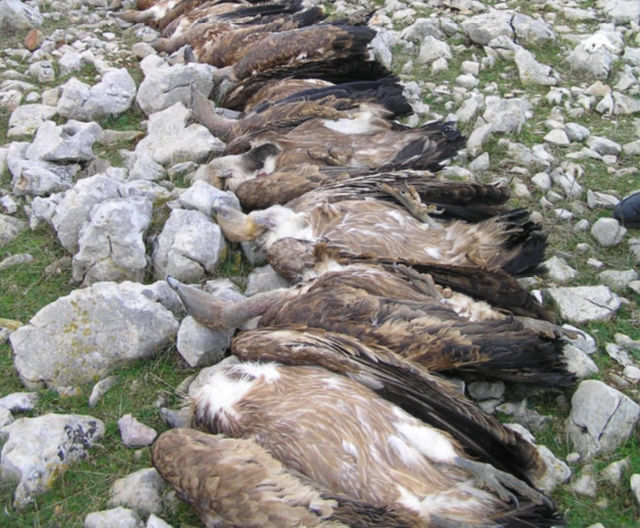Motives
The key drivers behind the use of poison baits in the Balkans
Even though it is not always possible to verify and confirm the driver behind the placement of poison baits in each case, it is crucial to better understand the motives behind illegal wildlife poisoning to provide solutions and tackle this threat head-on. Over the years, extensive investigations in the Balkan region identified conflicts with predators as the leading motive for the intentional placement of poison baits to kill wild, feral or domestic animals.
Conflicts with Predators
Secondary motives behind poisoning
Vultures are not Typically the Target of Poisoning
Although not typically the target, as vultures rely on carrion for their survival and reproduction, they are the most susceptible to fall victim to poison baits, with multiple vultures often becoming poisoned while feeding on a single laced carcass. Furthermore, avian scavengers such as vultures have the highest percentage of extinction-prone species among avian functional groups, and the most common driver of their declines worldwide is illegal poisoning.



















